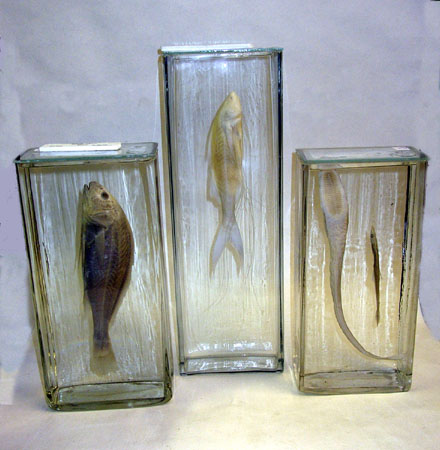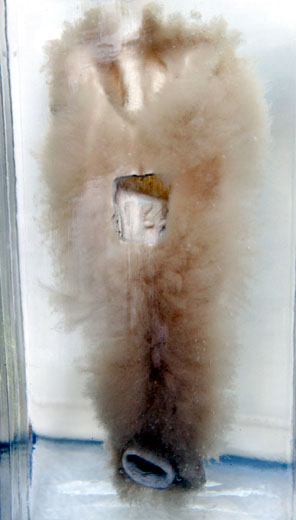Conserving fluid-preserved specimens for Cambridge University’s Zoology Museum
Simon Moore has been engaged on a long-term project at the Zoology Museum of Cambridge University where the fish
gallery has been re-furbished over the last year. Many of the specimens were preserved in fluid and some of these
required conserving, repairing and remounting. About sixty fish and two marsupial spcimens had to be transferred from formalin into preserving strength alcohol and re-mounted in glass 'battery' jars.
Some examples of the work are given below.


The image on the left shows three specimens after conservation and remounting -
the Drum fish on the left of the photo
is a specimen collected by Charles Darwin. The three images on the right show
a Conger eel larva that required some delicate repair work as it had collapsed into three pieces.
On the far right is the repaired specimen carefully put back together.


The image on the left shows two microslide wet-mounts
of hydroids from the Busk collection that required conservation. On the right is one of the specimens
after conservation was complete.
These had previously been conserved by Simon Moore when working in the
coelenterate section of the Natural History Museum in London (c. 1985).



Above left and centre: a conserved spoonbill sturgeon skull. Right: A Red-Necked Wallby teat after conservation.
Many of the specimens were re-mounted in glass 'battery' jars which involved drilling holes in glass backing plates and mounting
them with monofilament, having dehydrated the specimens from formalin into 80% IMS and then sealing and topping up the jars.
For more details about what we can do for you, or for a quote, please
contact:
enquiries@natural-history-conservation.com
We
are members of the United Kingdom Institute for Conservation of Historic and
Artistic Works